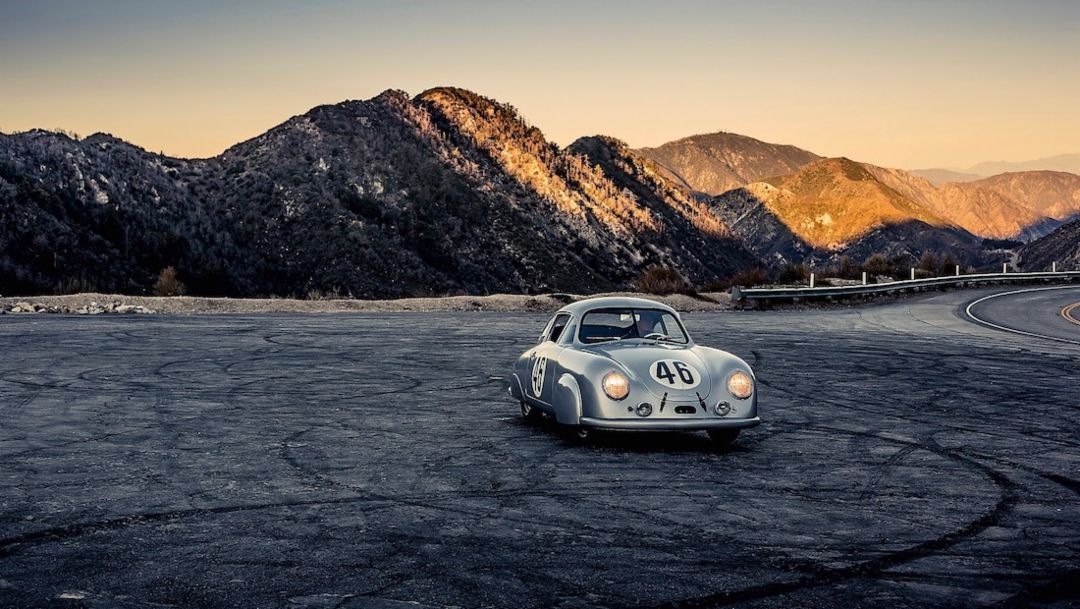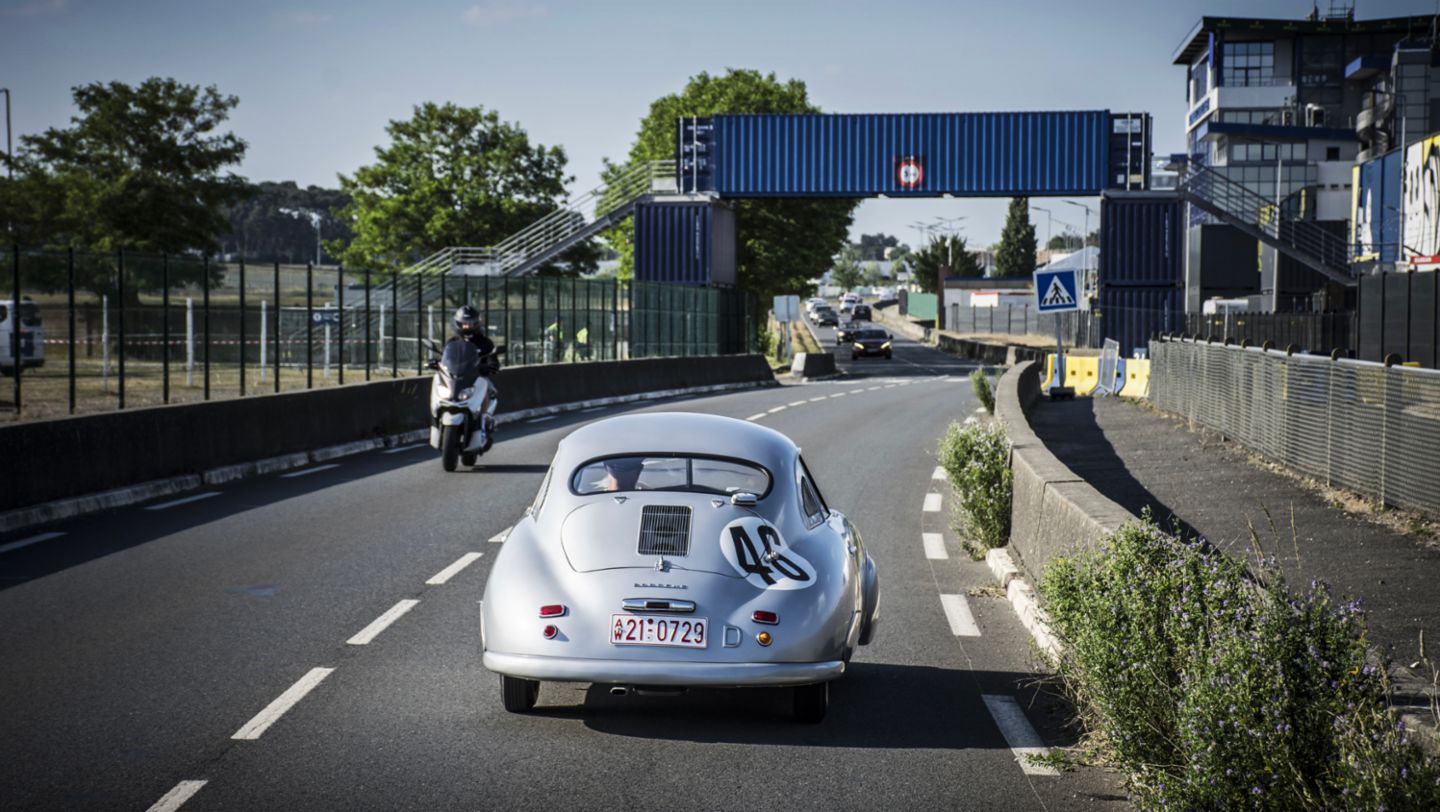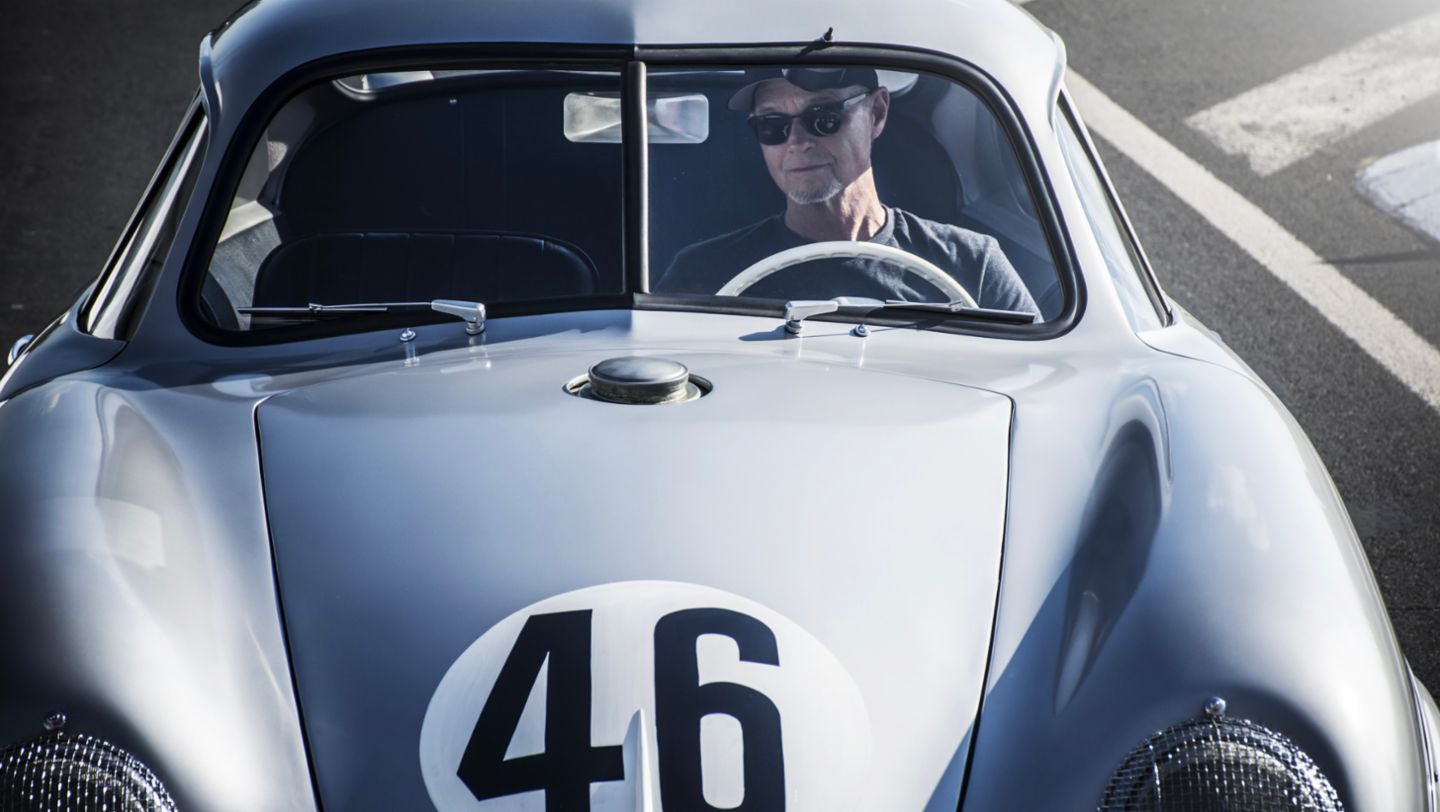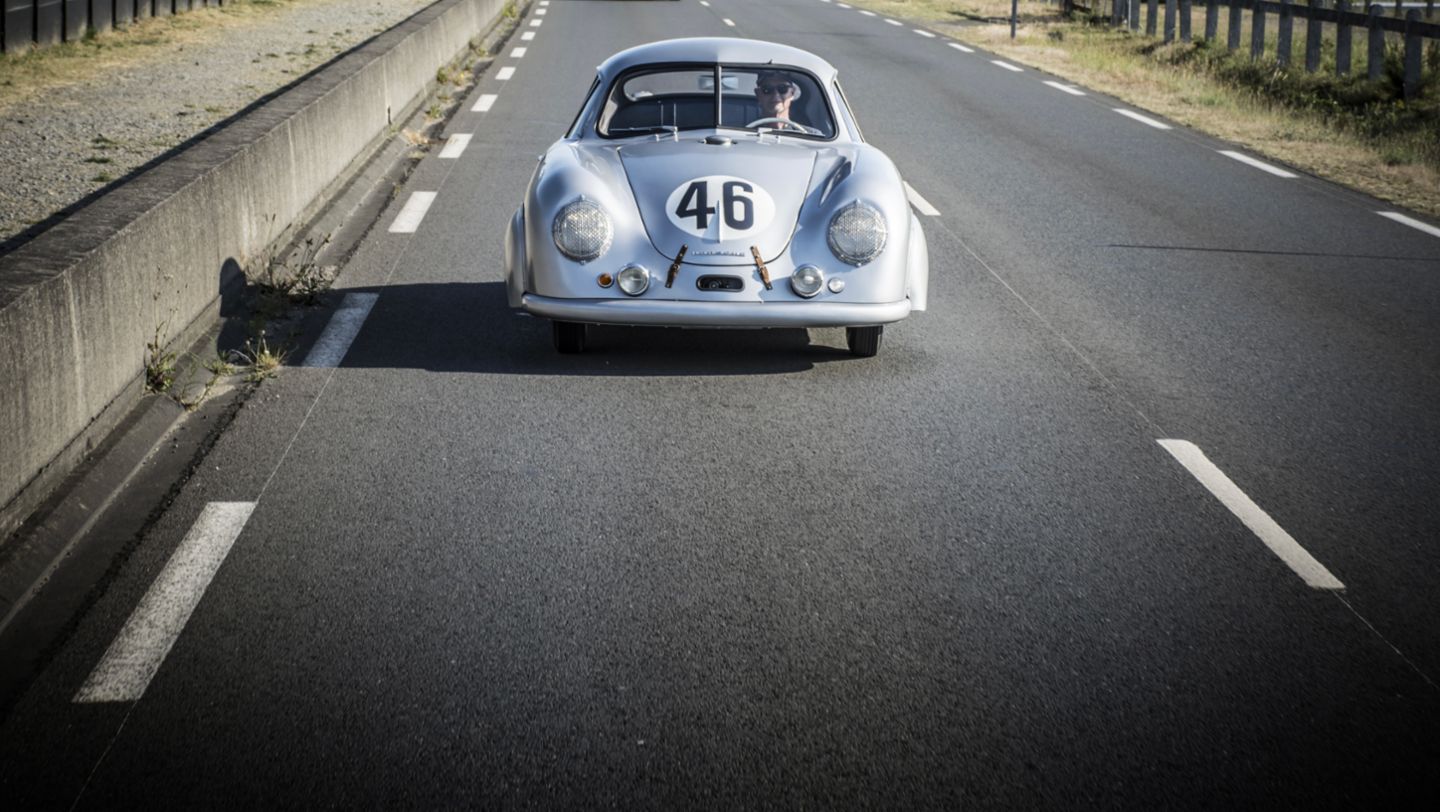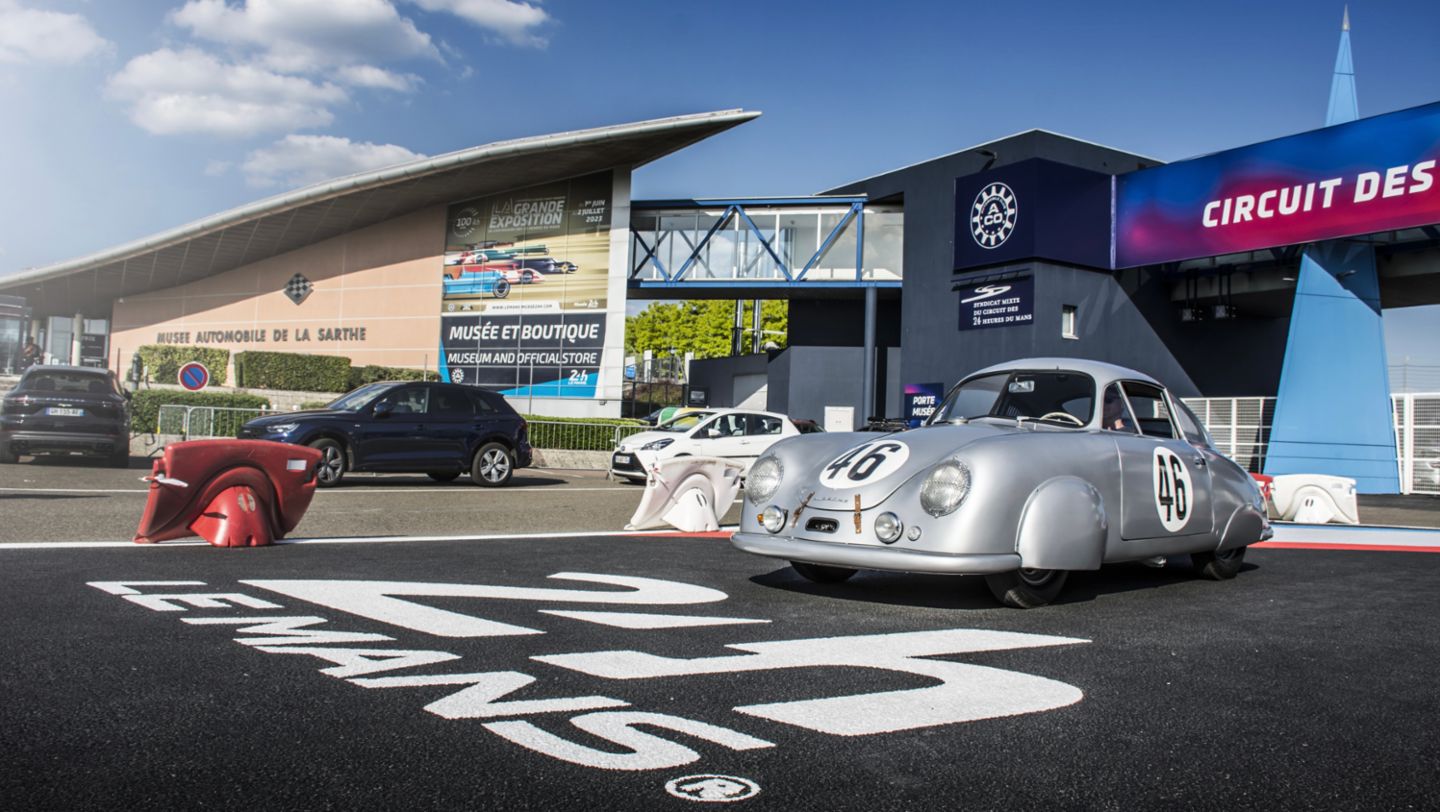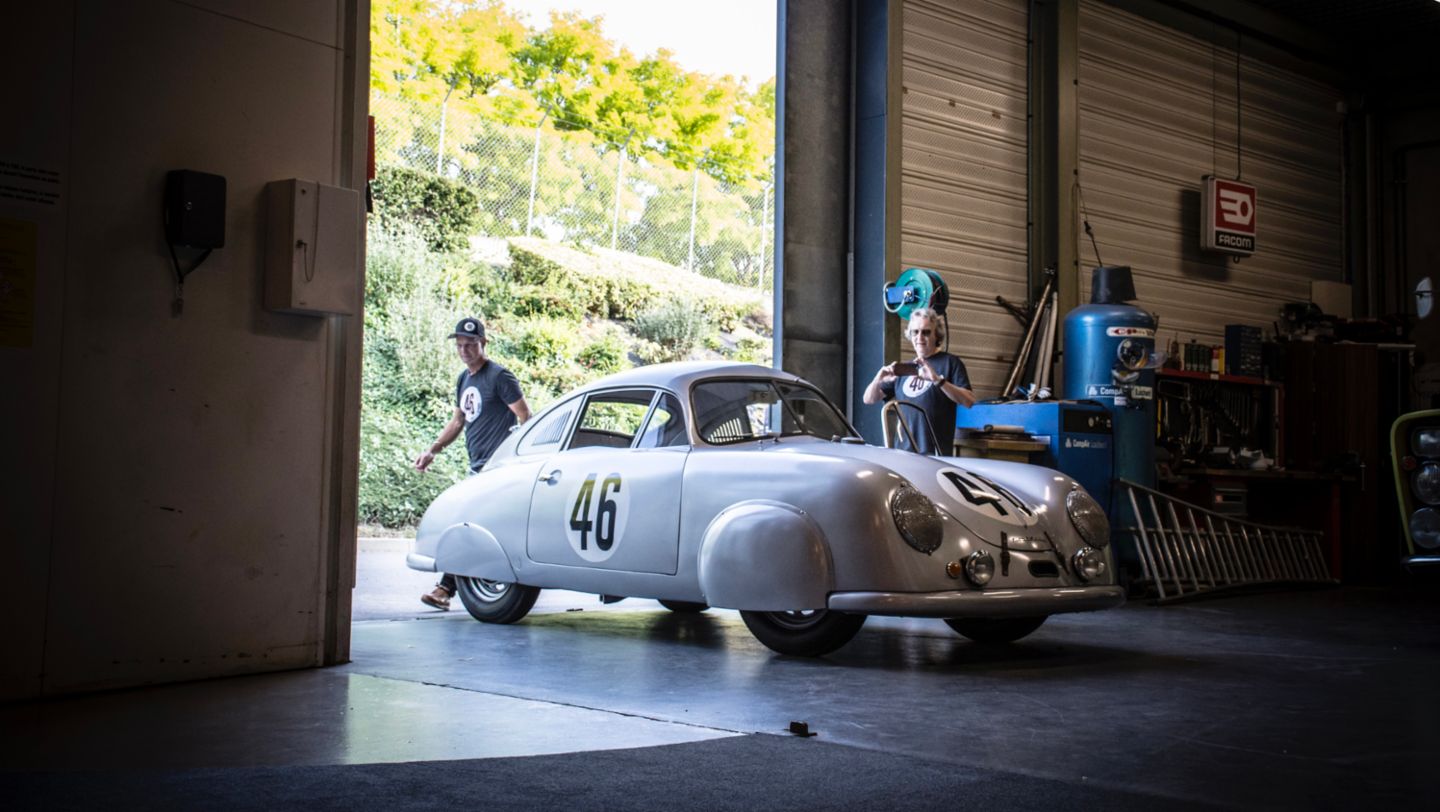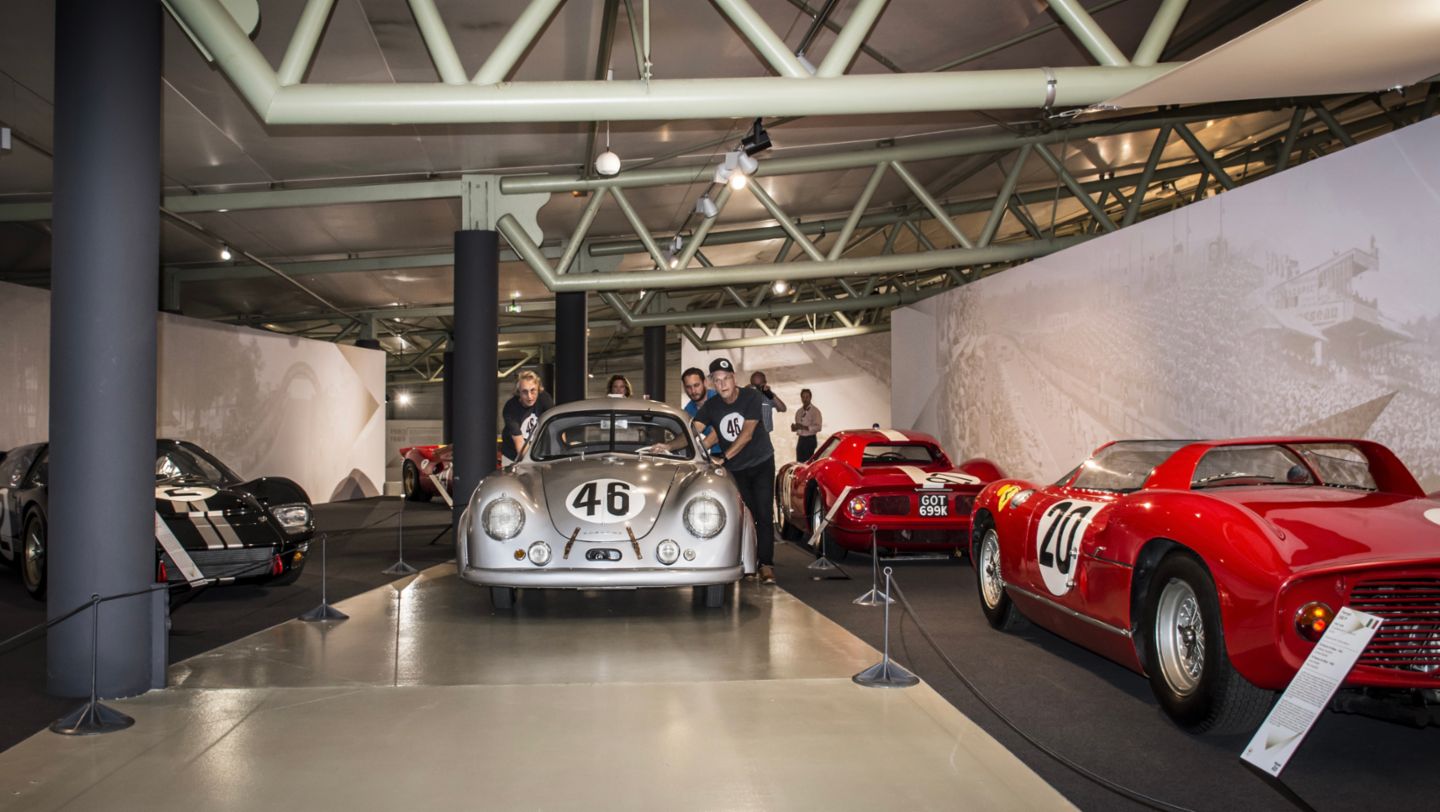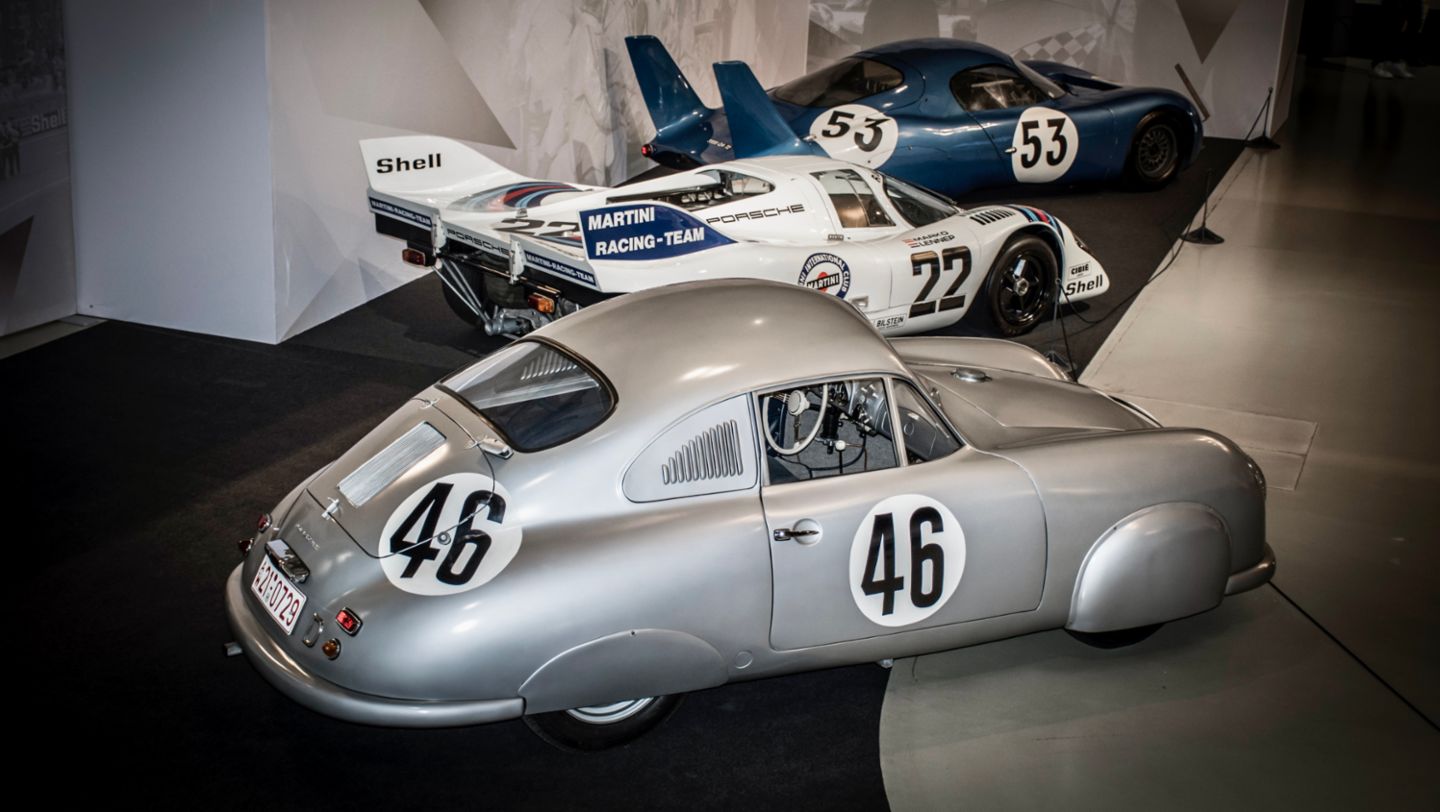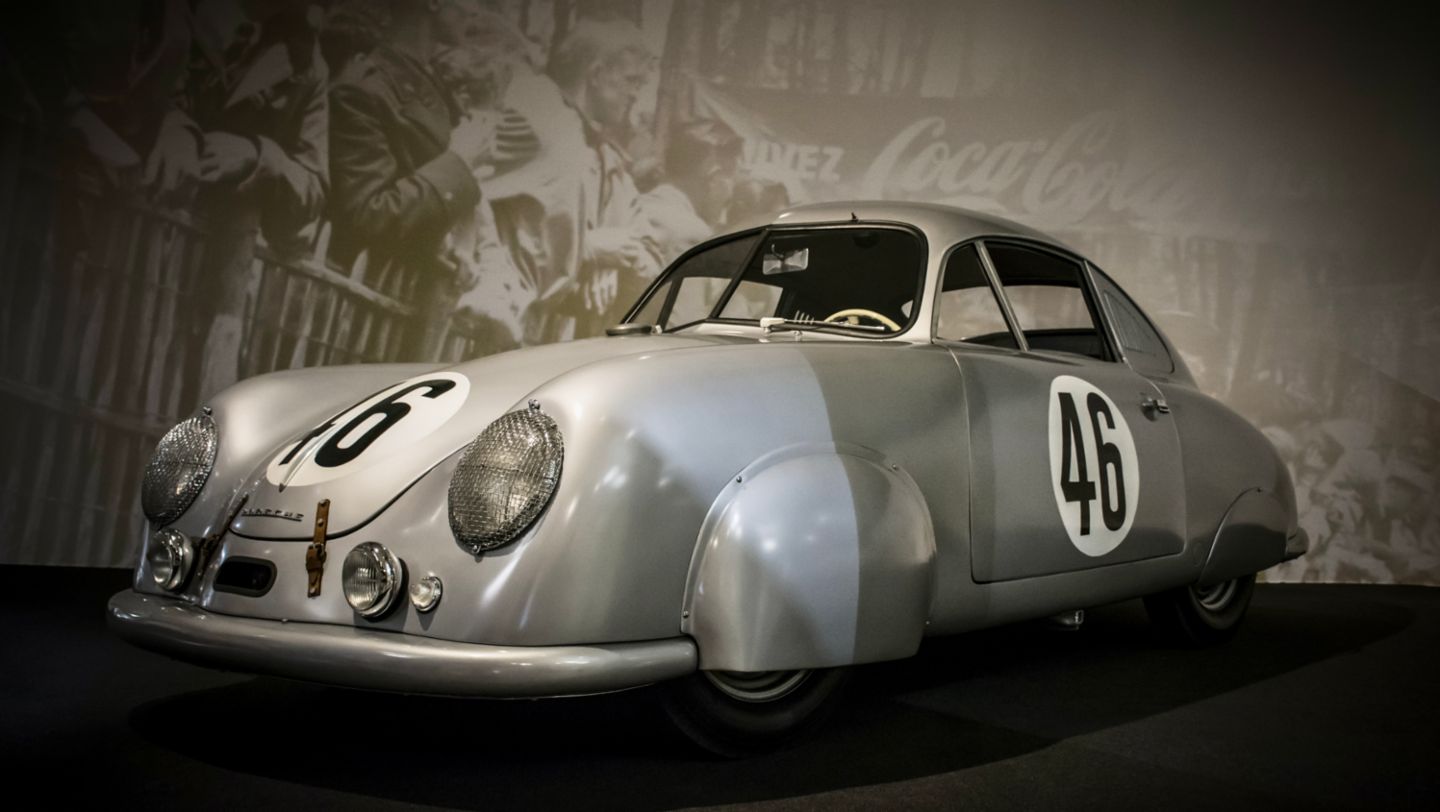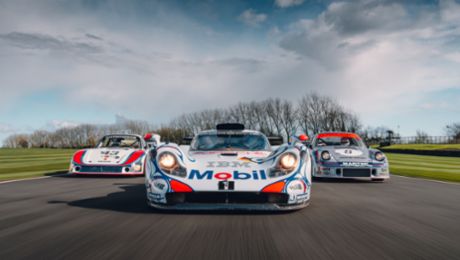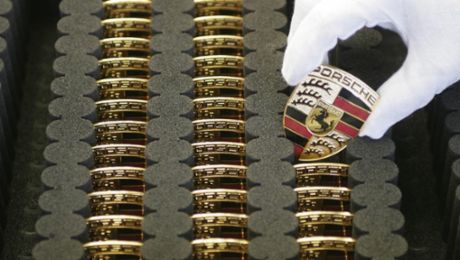Weaving gently along a quiet rural road in northeast France, Cameron Healy is enroute to fulfil a dream he has nurtured for 13 years. In so doing, the 72-year-old American will also bring full circle one of the most important stories in Porsche’s own 75-year history. Healy is heading to Le Mans, bringing with him a car that for many decades was presumed lost without trace: the first ever Porsche to race at the 24 Hours.
For Healy, the journey really began 30 years ago when the entrepreneur and Porsche collector was visiting an event in northern California. “It started in 1993 at what back then was called the Monterey Historic races,” Healy says. “This little red roadster stopped me in my tracks. I’d never seen a Gmünd car before, let alone a roadster, and I didn’t know its background.”
Neither, it turned out, did long term owner Chuck Forge, who continued to display and drive the car right up until his passing in 2009, at which point Healy was able to acquire the unusual-looking 356 from Forge’s estate.
There had been rumours in collectors’ circles that this aluminium-bodied car may have been one of the three examples Porsche entered into the 1951 staging of the 24 Hours of Le Mans, but any obvious physical evidence to support such a suggestion was long gone. In 1952, Californian Porsche importer John von Neumann had cut the roof off the car in order to save weight. It had also been repaired and repainted, all but eradicating any traces of its origins.
This car is the Le Mans class winner of 1951
Healy embarked upon an extensive restoration, recruiting renowned 356 expert and close friend Rod Emory to complete the work. The pair undertook a forensic examination of the bodyshell which, combined with five years of painstaking research, managed to prove beyond doubt that Healy’s car was indeed chassis 356/2-063, class winner on debut at Le Mans in 1951.
In the aftermath of this discovery, and following the completion of an exacting restoration to original 1951 ‘SL’ race specification, Healy and Emory were able to bring to fruition an idea they had tossed around since the very start: returning 063 to Le Mans.
Bringing the car back to Le Mans and fulfilling a dream
“It goes right back to when I first acquired the car,” Healy explains today. “Rod and I had only just begun taking the paint off to begin the restoration and we were already talking about this dream of one day bringing the car back to Le Mans. It had been shipped to the US in November 1951 and lived consistently in California since then, so being able to return to the circuit and do a lap of honour became the goal, albeit a far-fetched one because we hadn’t actually proved it was the Le Mans car at that point! But with the 100th anniversary of Le Mans and the 75th anniversary of Porsche coinciding, it became clear 2023 was the year the car needed to go back.”
At the start of what has turned into an extensive European tour for Healy and his 356, the car was shipped to Zuffenhausen and spent three weeks on display in the Porsche Museum. While there, Healy began researching the precise route taken by both works cars when they were driven from Stuttgart to Le Mans in the summer of 1951.
The Porsche archive revealed a simple itinerary created by the technicians tasked with driving the cars to the race that listed every town through which they would pass. Healy found an early 1950s road map that enabled him to plot the same route that the cars would have taken in period, and on the last Tuesday in May he set off once more from Stuttgart towards La Sarthe.
Route as close to the one in 1951 as possible
“We recreated the route as accurately as possible,” Healy continues. “We had all the towns they planned to travel through so we could plot the probable roads they would have used before there were any motorways. We had to guess a little, plotting the most direct routes between towns and doing our best to travel those. The documents state that the drivers had two days to do it in 1951, and having driven the route myself on those small roads, I’d be amazed if they could have done it. But maybe they did some very long days at the wheel!”
When Healy arrived at Le Mans he drove straight to the tiny village of Teloché and the famous garage on ‘Rue du 8 Mai’ that Porsche used at its headquarters for two decades. From here, the car was taken to the Museum of the 24 Hours to take its place among a special exhibition of 80 overall and class winners from across 100 years of the world’s toughest motor race.
“It felt very meaningful to arrive at Le Mans,” Healy says. “That class win in 1951 really helped put Porsche on the world motorsports map, and brought the company a lot of recognition early on. This car helps tell the story of Porsche from its earliest beginnings and this trip is really the apex of a very long journey.”
Chassis 356/2-063 will be on display at the Museum of the 24 Hours in the run up to the race weekend and will drive parade laps prior to the main race with Healy at the wheel. The car will also be taking part in a special event at the Le Mans Classic in late June, including the unveiling of a special collaboration with Porsche Exclusive and Porsche France, before appearing at the Festival of Speed in the UK in July. Follow its journey on Instagram here: @46slroadtolemans.
